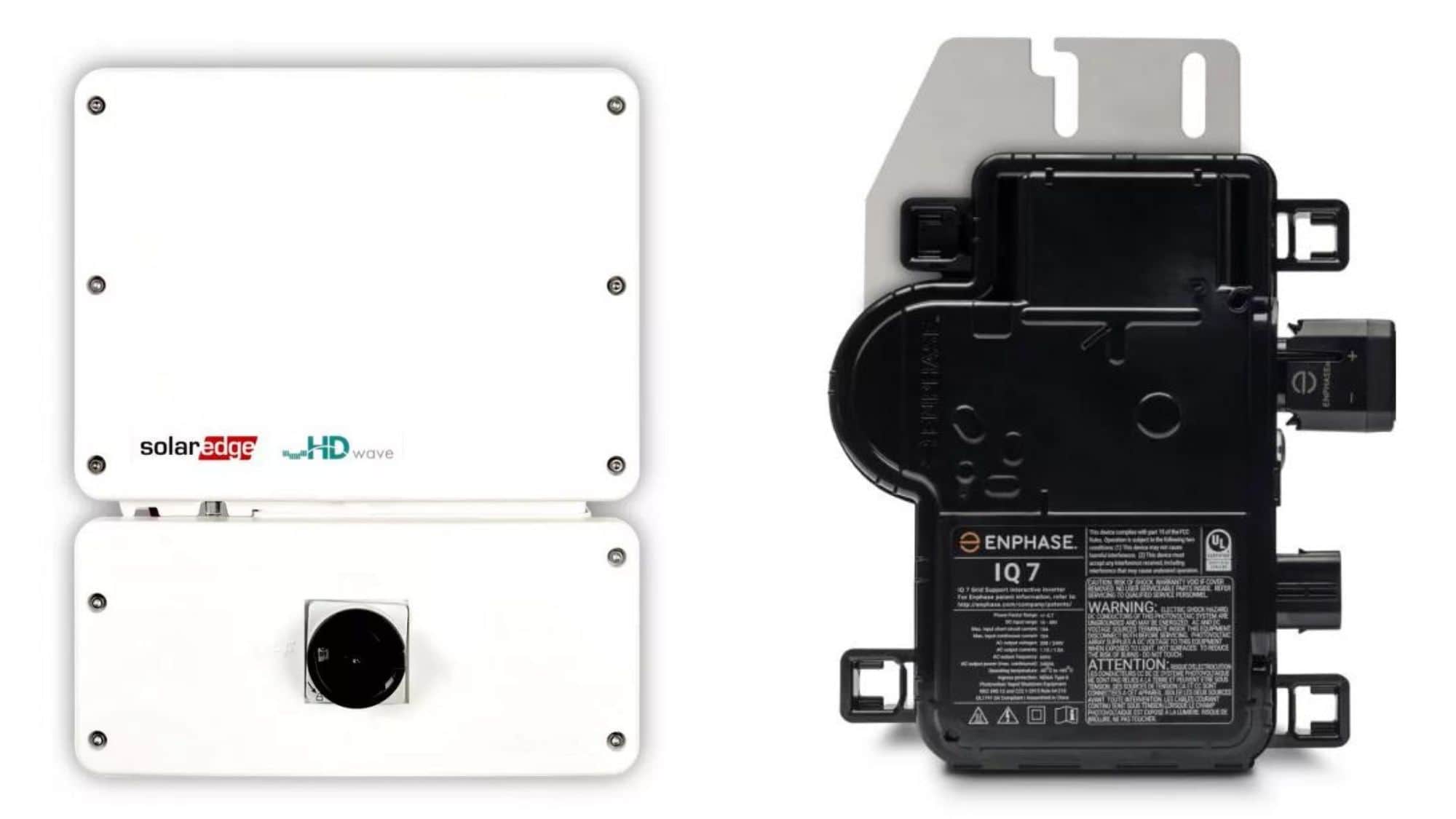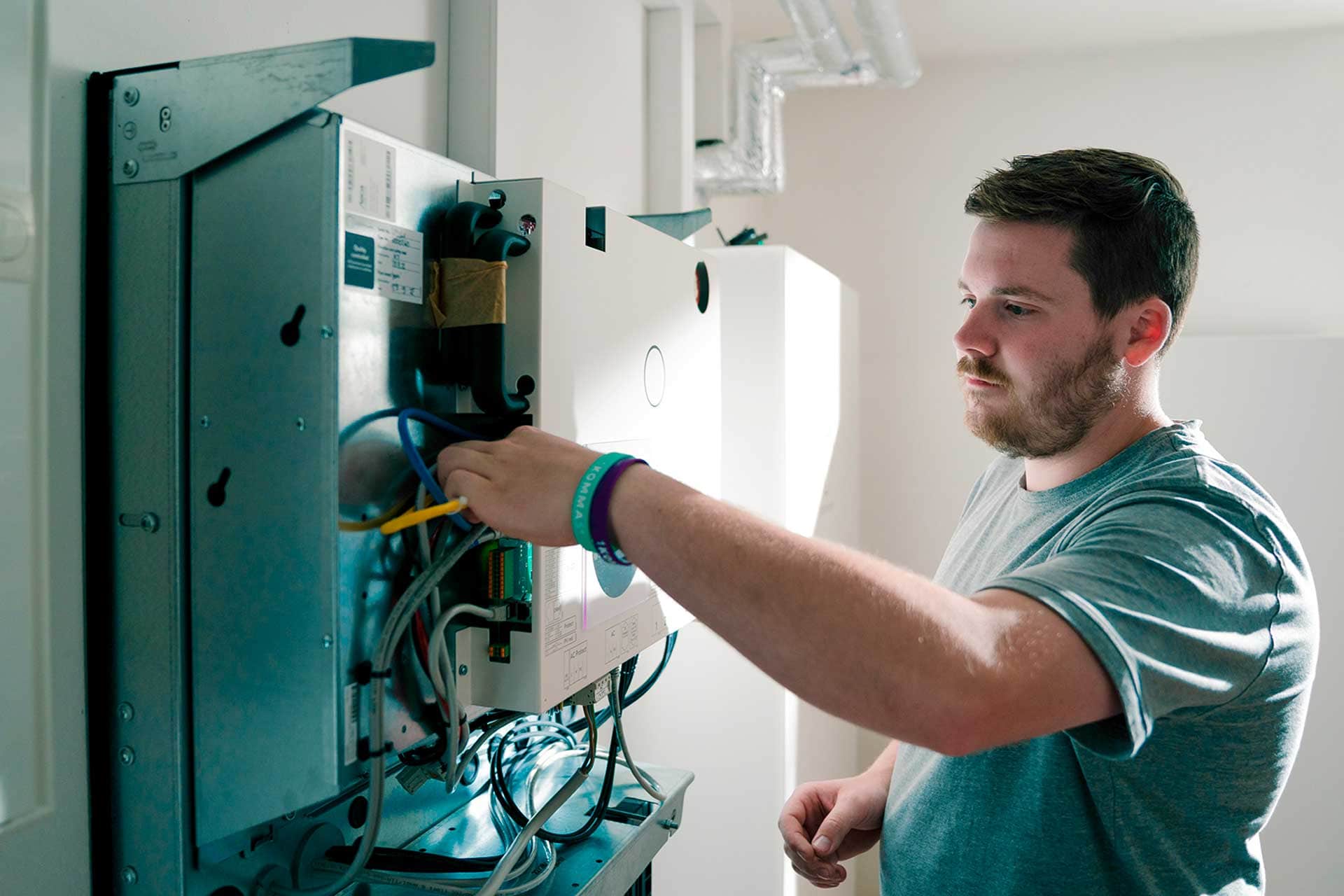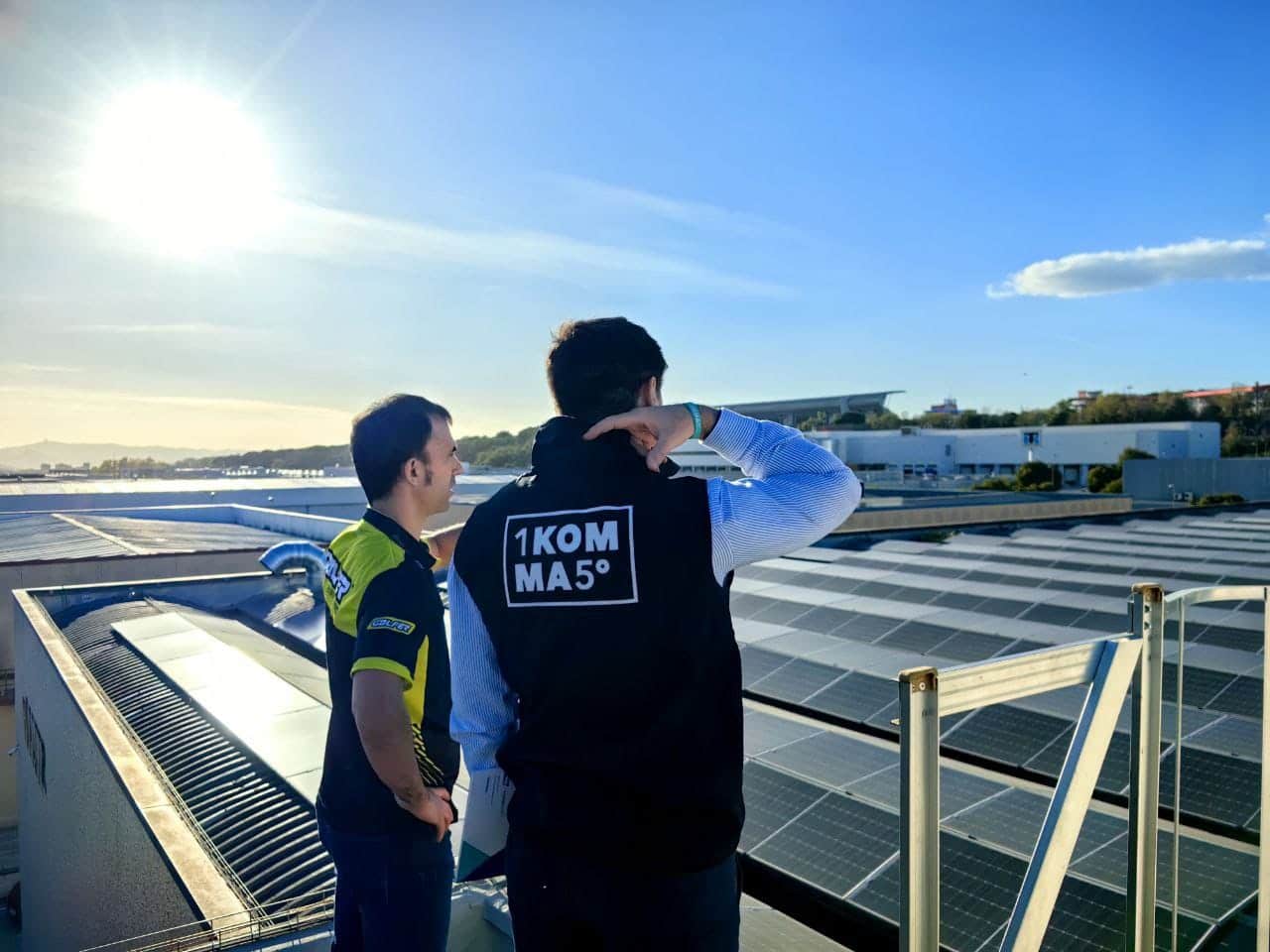
Solar Inverter Cost in 2025
With 2025 bringing in new technologies and potential price fluctuations, it’s natural to wonder if inverter prices will be the same. Understanding what drives inverter pricing and how to navigate these changes is essential to making an informed decision about your solar panel system.
This guide will walk you through the cost of solar inverters in 2025. Let’s discuss the factors that impact pricing and whether it’s worth investing in a more expensive model.
Key Takeaways:
The cost of a solar inverter depends on multiple factors – Type, capacity, brand, warranty, and additional features all influence the price. Choosing the right combination of these factors ensures you get the best value for your solar system.
Budget inverters may cost less upfront but have drawbacks – Cheaper models may have lower efficiency, shorter lifespans, and limited warranty coverage. They may lead to higher maintenance or replacement expenses over time.
Larger inverters cost more but are necessary for bigger solar systems – A 5kW inverter will be more affordable than an 8kW or 10kW model due to higher energy capacity. Investing in the right size ensures your system can handle your home's electricity demands efficiently.
Upgrading your inverter can improve system efficiency – If your current inverter is outdated, a newer model may offer better performance and grid compliance. Upgrading your system leads to higher energy yields, better monitoring capabilities, and increased savings.
The Role of Solar Inverters in a Solar Panel System
A solar inverter is the heart of your solar power system. Without it, the power your solar panels generate would be unusable. Solar panels produce direct current (DC), but your home runs on alternating current (AC). At its core, a solar inverter’s job is to convert DC to AC.
A good inverter does much more than just convert power. It also maximises system efficiency. They ensure you get the most out of your solar panels, even during cloudy conditions.
If you have a hybrid or battery-ready inverter, it goes a step further by managing power flow. It decides whether to send excess energy to your home, store it in a battery, or feed it back into the grid.
On top of that, modern inverters have smart monitoring capabilities. This feature tracks your solar production in real-time and quickly spots any system issues before they become major problems.
The quality of your inverter can make or break your solar power experience. That’s why it's important to understand solar inverter costs and choose the right one for your system.
Why Are Some Inverters More Expensive than the Other
If you've been comparing solar inverter prices across Australia, you’ve probably noticed that costs can vary significantly. Some inverters have a lower initial price, while others are more expensive—but why? The cost of a solar inverter depends on several key factors, including the type of inverter, its power capacity, brand reputation, warranty, and additional features.
1. Inverter Type
Not all inverters work the same way, and their technology plays a big role in pricing:
String inverters are the most common and affordable type of solar inverter. The primary advantage of string inverters lies in their cost-effectiveness and simplicity.
DC optimiser works with a central string inverter to provide a balanced solution for solar systems. Each optimiser is installed on individual panels to enhance efficiency, ensuring each one performs at its best.
Microinverters convert each panel individually. Due to this feature, they have better efficiency and shading tolerance. This improved performance comes at a higher cost compared to string inverters.
Hybrid inverters manage your solar panels and battery storage. A good example is the Tesla Powerwall 3, which includes a built-in hybrid inverter. This makes it more affordable for homeowners as they don't need to invest in a separate inverter.

2. Power Capacity
The larger your solar system size, the more powerful the inverter needs to be. A 5kW inverter will be more affordable than an 8kW or 10kW inverter. Higher capacities require advanced components and better cooling systems to handle the increased energy flow.
3. Brand and Efficiency
Like any technology, brand reputation and performance matter. High-efficiency brands such as SolarEdge, Enphase, and Sungrow tend to cost more, but they offer:
Better energy conversion rates (more solar power turned into usable electricity)
Proven reliability and minimal risk of failures
Advanced monitoring features that allow you to track performance easily
On the other hand, budget-friendly brands may save you money upfront but could lead to lower efficiency, shorter lifespans, and a higher chance of early failure.
In the case of Tesla Powerwall 3, the built-in hybrid inverter makes the entire system more efficient and affordable.
4. Warranty and Lifespan
A longer warranty period usually signals a higher-quality inverter. Premium inverters often come with 10+ years of coverage, while budget models may only offer 5 years. A higher initial cost could mean less likelihood of breakdowns, costly repairs, or premature replacements. Additionally, some inverter brands even offer extended warranty options. Always consult your solar provider to understand the terms and conditions.
5. Single Phase or Three Phase
One key factor influencing solar inverter pricing is whether your home has a single-phase or three-phase power supply. This determines the type of inverter you’ll need and how your solar system integrates with the grid.
Single-Phase Inverters
If you have a standard home setup, you’ll likely need a single-phase inverter, which is generally more affordable.
Cost range: $2,500 – $4,000 for a 5kW–10kW single-phase inverter.
Three-Phase Inverters
Larger homes or properties with high energy consumption often have three-phase power to distribute electricity more efficiently. If your home has three-phase power, you’ll need a three-phase inverter to balance solar energy across all phases.
Cost range: $4,000 – $6,500 for a 5kW–10kW three-phase inverter.

6. Government Rebates and Incentives
The Australian government has made solar installation more accessible to homeowners by offering various rebates and incentives. If you're looking to reduce the cost of your inverter and solar system, Small-scale Technology Certificates (STCs) can help. These certificates are part of the Renewable Energy Target (RET) program and allow homeowners to receive a financial incentive for installing solar energy systems.
Each STC represents a reduction in the environmental impact of solar power and can be traded or sold to reduce upfront installation costs. The number of STCs you're eligible for depends on the size of your solar system, location, and installation date.
You can afford higher-quality inverters more affordable by taking advantage of STCs. These incentives make solar power an even more appealing option for homeowners across Australia.
For more information on government rebates and incentives in Sydney and Melbourne, check out these detailed guides:
7. Installation Cost
The cost of the inverter can vary based on the complexity of the installation process. For example, string inverters are more affordable and quicker to install since they only require one unit to connect multiple panels in series.
However, installing microinverters is expensive due to their time-consuming and complex process. Installers install each microinverter under individual panels. This process requires additional labour and attention to detail, resulting in higher costs.
Meanwhile, built-in hybrid inverters reduce installation costs since customers only need one installation instead of two.
8. Additional Features
Modern inverters come with extra features that can drive up the cost, such as:
Smart monitoring apps to track solar production and diagnose issues
Battery compatibility for seamless future upgrades
Weatherproofing for outdoor installations in harsh Australian climates
Average Cost of Solar Inverters in Australia
A solar inverter is rarely purchased on its own. It is usually part of a complete solar panel system. The total price of your system will depend on factors like panel quality, inverter brand, and installation costs.
To give you a clearer idea of how inverter pricing affects the price of your system, let’s take an 8kW solar system and a 10kW solar system as examples. These system sizes are popular among Australian homeowners because they cover a large portion of their household electricity bills.
An 8kW solar system with best-value panels and a standard installation can start at $9,600.
A 10kW solar system starts at around $12,000. If you opt for Enphase microinverters, it will cost a few thousand more.
Prices may vary based on the installer, system size, location, government rebates, and additional system features. It's advisable to consult our solar experts to obtain accurate quotes tailored to your needs. In the meantime, here are the prices of other system sizes in Sydney you can explore:
Should You Invest in a Premium Inverter or a Budget One
When choosing a solar inverter, you’ll come across three main pricing categories—budget, mid-range, and premium inverters. You might wonder: is it worth paying more for a high-end inverter, or will a budget model do the job?
Budget inverters are often appealing due to their lower upfront cost. Lesser cost means more affordable solar installation. However, they may lack efficiency, advanced monitoring features, and long-term durability.
Also, many budget brands offer shorter warranties (around 5 years). You could face replacement costs sooner than expected. If you just want to reduce upfront costs, a budget inverter may work—but make sure it comes from a reputable brand.
Premium inverters, on the other hand, are more efficient, have longer warranties (10+ years), and have better build quality. Brands like Fronius, SolarEdge, and Enphase have higher energy conversion rates. They also handle Australian weather conditions better, and the risk of overheating or breakdowns is minimal.
Premium inverters are more expensive but can save you money in the long run through higher efficiency, fewer repairs, and a longer lifespan. If you plan to stay in your home for many years or want a worry-free solar system, investing in a premium inverter is often the smarter choice.
If you’re looking for a balance between price and performance, mid-range inverters like Sungrow, Huawei, and SMA can be an excellent choice. They have higher efficiency, better durability, and longer warranties (5–10 years) at a more affordable price.
Your choice should align with your energy needs and long-term goals. To make an informed decision, ask your 1KOMMA5° solar expert what additional features and benefits a premium inverter provides. Then, consider whether those features are worth the extra cost for your home.

How Much Does Replacing a Solar Inverter Cost
If your solar inverter has stopped working, the first thing to determine is whether it can be repaired or needs a full replacement. The cost of replacing an inverter depends on factors like warranty status, system size, and inverter type.
Most inverter replacements cost from $5,000, including installation.
Small system replacements (2kW–3kW) may be slightly cheaper.
Upgrading to a larger 5kW+ inverter often costs the same as replacing a smaller unit.
Is Your Inverter Still Under Warranty?
If your installer and manufacturer are still in business, you may be eligible for a free replacement (only paying for labour).
However, 1 in 3 solar systems in Australia are “orphans”. Solar orphan means the original installer is no longer around. There is a huge chance claiming a warranty would be impossible.

Should You Replace or Upgrade Your System?
If your system is several years old, replacing just the inverter may not be the best long-term solution. Replacing an inverter for $5,000 is not as good an investment as installing a new, more efficient solar system.

Take It from Our Experts!
At 1KOMMA5°, our solar experts help homeowners like you find the best inverter for their energy needs, budget, and long-term savings. Before you commit to an inverter, get expert advice—we’ll walk you through your options, explain the differences, and help you invest in a system that delivers real value.
Frequently Asked Questions about Solar Inverter
What’s the cheapest solar inverter option?
Basic string inverters from budget brands can be cheaper, but they might not last as long or perform as efficiently. If you’re looking for affordability without sacrificing too much quality, mid-range brands like Sungrow offer a good balance between cost and reliability.
Does replacing an inverter qualify for government rebates?
Not usually. In most cases, solar rebates apply to the entire solar system, not just the inverter. If you’re installing a new system, the Small-Scale Technology Certificate (STC) rebate can help reduce the total cost. However, replacing an old inverter alone usually doesn’t qualify for rebates.
What are the best ways to reduce the upfront cost of a solar inverter?
Choose a reputable mid-range brand – You don’t always need the most expensive option.
Look for package deals – Bundling with solar panels may lower costs.
Consider financing options – Many providers offer interest-free payment plans.
Check for promotions – Some solar retailers offer discounts on inverter upgrades.
Do I need to buy the most expensive inverter?
Not always. The right inverter depends on your budget, energy needs, and system size. If you have a standard rooftop solar system and don’t plan on adding a battery, a reliable mid-range inverter can be enough.
Helpful Articles About Solar Cost:

1KOMMA5° Blog
Need more information?
Head over to the 1KOMMA5° blog for more helpful tips and other important guides on everything solar, from inverters, panels and batteries to how to make the most of your investment for years to come.